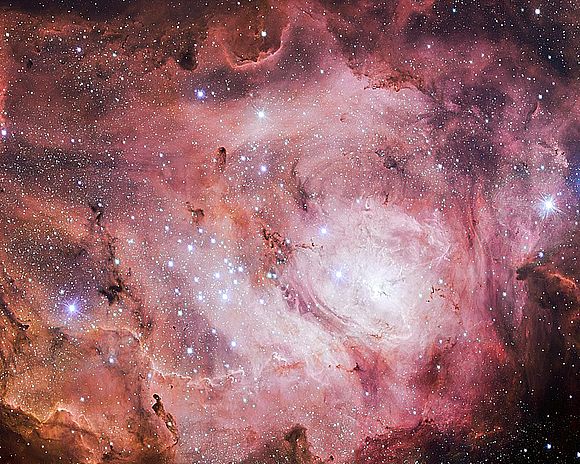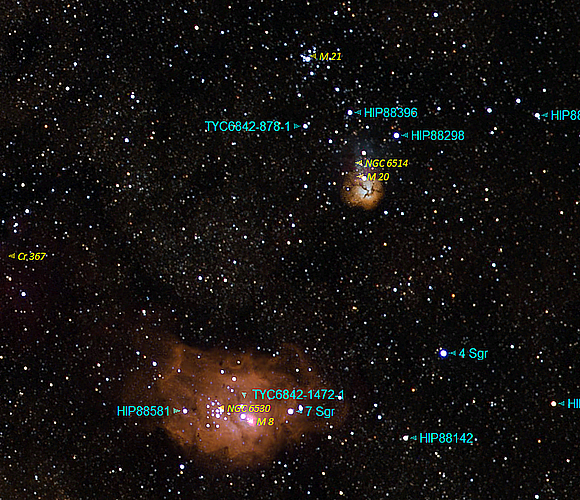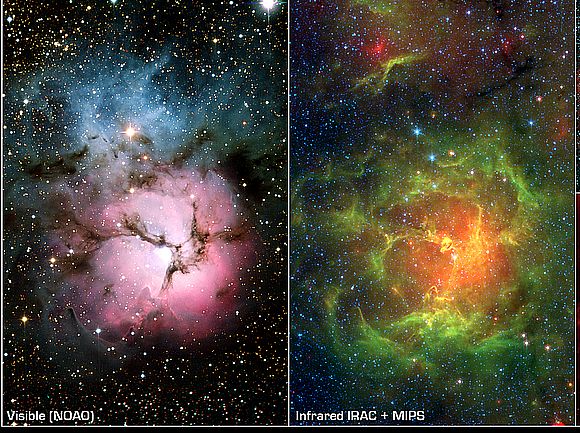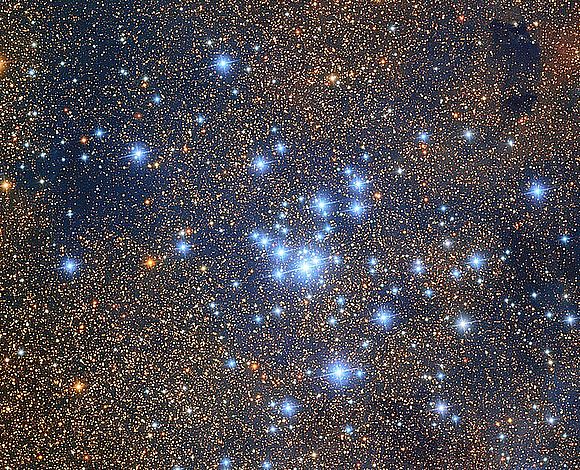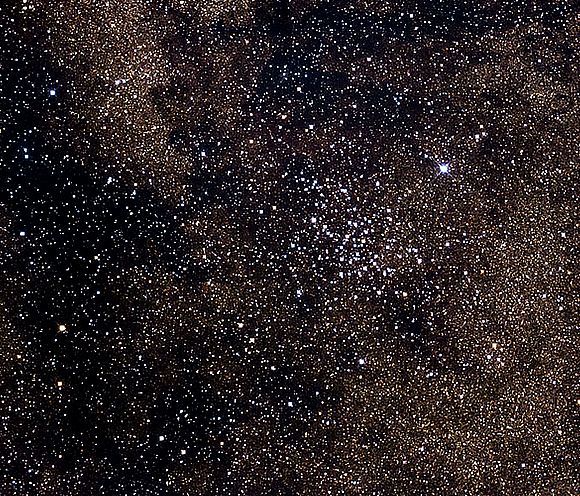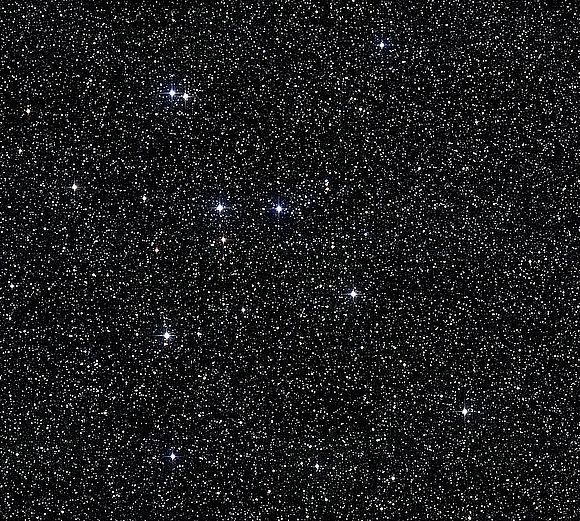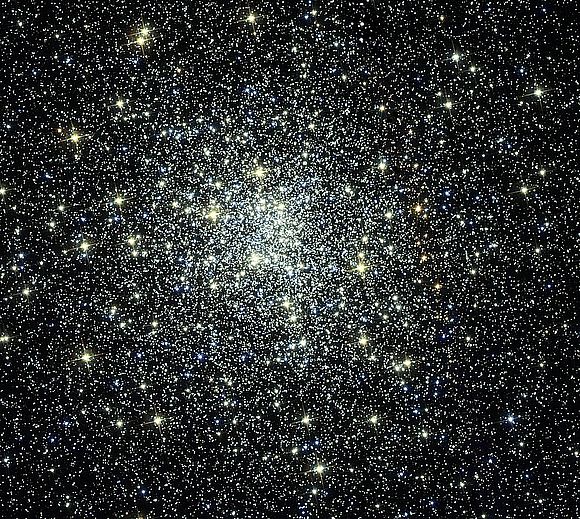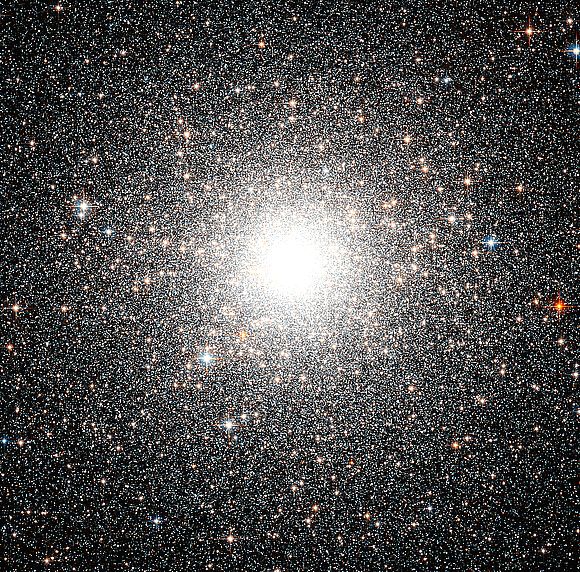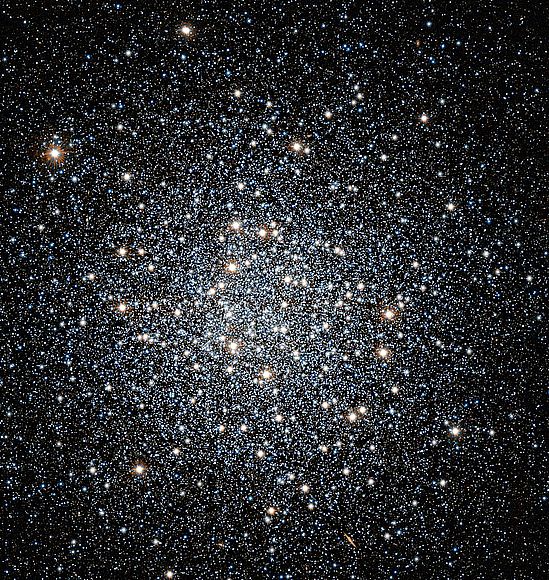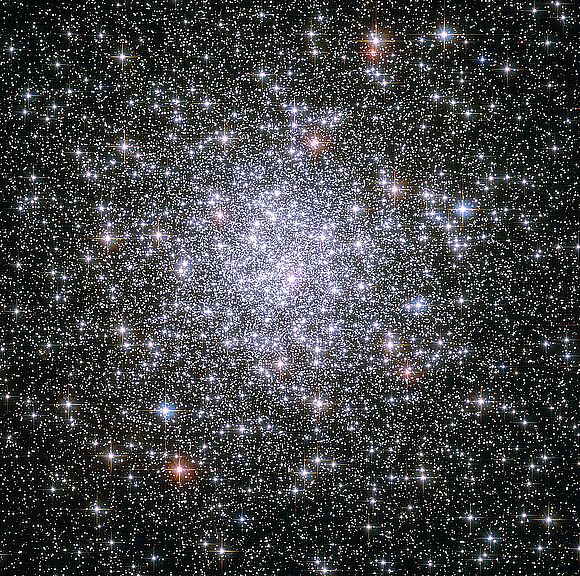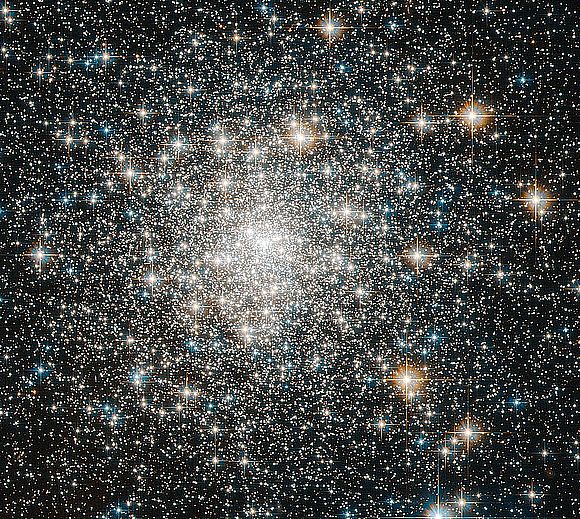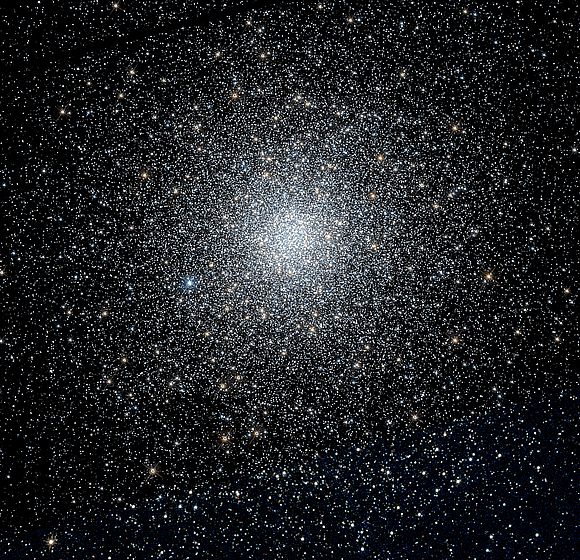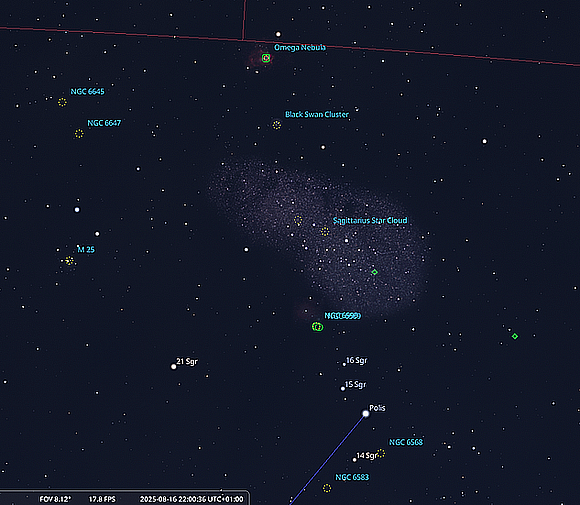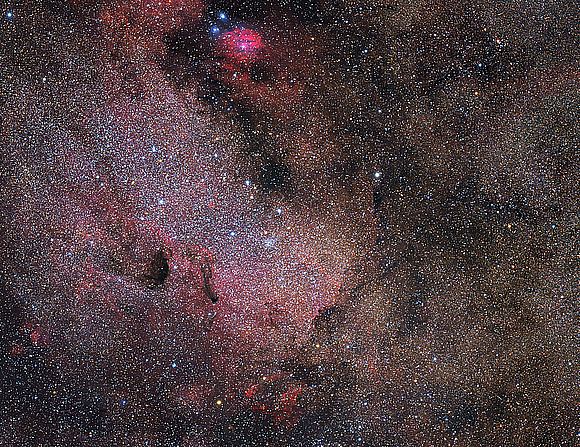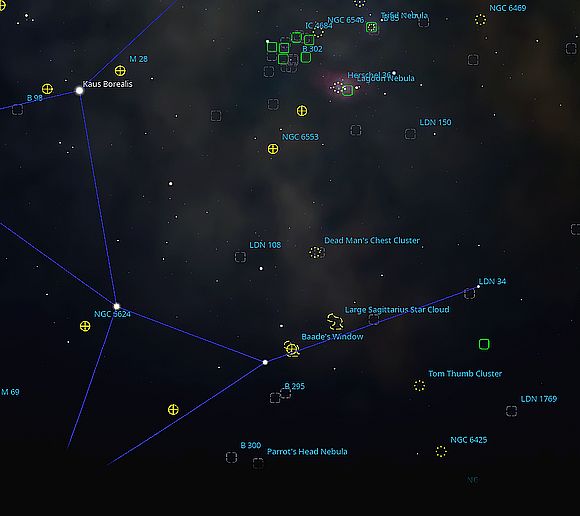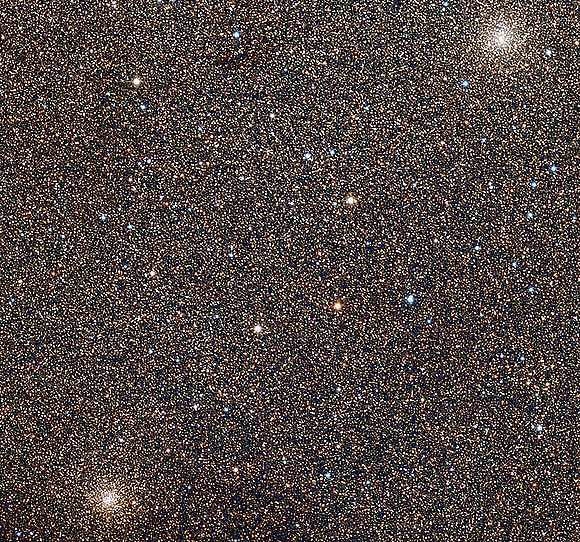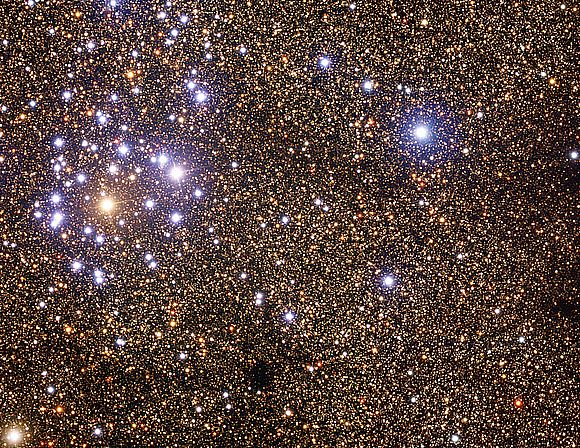Early October still offers up a great opportunity to observe Sagittarius as dusk falls. Sitting on the southern horizon at UK latitudes, the most southerly zodiac constellation on the ecliptic is also the richest in deep sky objects. For observers with a favourable southern aspect, observing Sagittarius can be highly rewarding given clear skies and stable atmospheric conditions.
This second part of the 'In Focus' feature on Sagittarius will look at some of deep sky objects in greater detail located within the ‘Archer’.
With the Milky Way at its densest and the Galactic Centre located in the direction of the Sagittarius/Scorpius border, it comes as no surprise that Sagittarius is rich in deep sky objects (DSOs). There are in total 36 DSOs brighter than mag +10 (within range of 80mm telescopes) alone.
The constellation also contains the Large Sagittarius Star Cloud, the brightest visible region of the Milky Way. This innermost galactic structure - a portion of the central bulge, can be observed in visible wavelengths around the thick dust of the Great Rift. It has several embedded clusters and superimposed dark nebulae. The Small Sagittarius Star Cloud, also known as Messier 24, is similar in nature.
Not surprisingly Sagittarius contains a plethora of Messier objects - 15 in total!
Messier numbers M18, M21, M23, and M25 are all open star clusters. Messier numbers M22, M28, M54. M55, M69, M70 and M75 are all globular clusters. M8, M17, and M20 are nebula and M24 is a star cloud.
Star cluster (NGC 6530) & Lagoon Nebula (NGC 6523) M8 was discovered independently by John Flamsteed in 1680, Le Gentil in 1747, then Messier in 1764. It lies below the Trifid Nebula, which in turn lies just below the open cluster M 21. All three objects lie to the right of the star Kaus Borealis.
Located around 4,400 light-years from Earth, M8 is a magnificent example of a young star cluster embedded in an active star forming region, giving rise to emission nebula. The star cluster comprises 130 plus members and is approximately 9 light years in diameter. The combined magnitude is 5.8 making it the brightest cluster in Sagittarius. The emission nebula itself measures approximately 115 light-years by 52 light-years, several times larger than the Orion Nebula. Its ionization is due to several extremely luminous stars including the spectral type O4 star 9 Sagittarii which has an absolute magnitude of -10.7.
The Lagoon Nebula M8 - composed of NGC 6530 & 6523 as imaged by the VLT in Chile.
(Click for larger image)
The nebula appears grey in telescopes to the unaided eye; it is only with long-exposure photographs that the characteristic pink hue common to emission nebulae is revealed. The central area of the Lagoon Nebula is also known as the Hourglass Nebula, so named for its distinctive shape and believed to be only 10,000 years old. The Lagoon Nebula also features three dark nebulae, B88, 89 & 296.
The Omega nebula M17 (NGC 6618) is also known as Horseshoe Nebula or Swan Nebula is another stellar cluster/emission nebula combo, but unlike M8 much of the cluster is hidden – obscured by dust and may contain upwards of 8,000 members. Overall, the cluster is quite bright with an integrated magnitude of 6.0. It was discovered in 1745 or 1746 by Philippe de Chesaux (not published at the time) and rediscovered by Messier in June of 1764.

A VST image of the Swan or Omega Nebula - M17. credit - ESO
M17 is the most northerly Messier object in Sagittarius lying just within its border where it is touched by Scutum and Serpens. The nebula is 5900 light years distant, possibly less than 300 light years away from M16 (Eagle nebula) in Serpens. The bright, central body of M17 measures 20 light years or so, however the overall total physical size may be 70 by 50 light years. A pair of binoculars (10 x 50) will reveal a nebulous band, but with apertures of 4-5” the nebula starts to fulfil its status as second richest in detail after M42 – the Orion nebula.
The Trifid Nebula M20 (NGC 6514) is an emission nebula less than two degrees from the Lagoon Nebula. Discovered by Messier in June 1764 it is located some 2,700 light-years from Earth, very much in the foreground compared to the other nebula in Sagittarius and occupies an area of 15-20 light-years.
M20 should be considered as being at an earlier evolutionary stage than M42 in Orion. The outside of the Trifid Nebula consists of a bluish reflection nebula, the interior H-II region glows pink with ionised Hydrogen and is divided by dark clouds into three areas, sometimes called "lobes". The Hydrogen is ionized by a central triple star, which formed in the intersection of the two dark bands and is not dissimilar to the trapezium star cluster in the Orion nebula in nature. It is probably well under half a million years old in age.
The star cluster magnitude is around 7.5. The Trifid may look spectacular in images but is difficult to appreciate with smaller instruments, surface brightness being low. The intersection can be seen with instruments of 150mm (6”) plus from dark locations.
Messier 18 (NGC 6613) is a small open star cluster originally discovered by Charles Messier in 1764. The cluster has an apparent magnitude of 7.0 and contains approximately 40 stars spanning an area 6-10 light years in diameter. The cluster lies 4200 light years away and lies on the near side of the Sagittarius spiral arm (unlike M8 and M17). It is believed to be no more than 50 million years old.
M18 (upper left) and neighbouring nebula. Image: VLT survey telescope, ESO, Chile.
(Click for full image)
Messier 21 (NGC 6531) is an open star cluster first discovered by Charles Messier in June 1764. Located 3950 light years distant, it lies in the Sagittarius spiral arm and contains over 100 members. The cluster is young, well under 10 million years and contains over 100 members. M21 has an apparent magnitude of 5.9.
Messier 23 (NGC 6494) is an open star cluster discovered by Charles Messier also in June 1764. The cluster has an apparent magnitude of 5.8 and is located just over 2000 light years distant. It has an estimated age of around 280 million years and contains over 170 stars in an area 20-30 lights years across. M23 has a magnitude of 5.5.
Messier 25 (IC 4725) is yet another open cluster but was discovered by Philippe Loys De Chéseaux in 1745 and added to Messier’s catalogue in 1764. The cluster is quite young – less than 100 million years old and lies some 2000 light years from Earth with an apparent diameter of 17 light years. It contains around 220 members and has a magnitude of 4.6.
The open cluster M25 - image credit - Atlas Image mosaic Two Micron All Sky Survey (2MASS).
(Click for full image)
Messier 22 (NGC 6656) was the first globular cluster to be discovered, not by Messier but by Abraham Ihle in 1665 from Leipzig, Germany when he was observing Saturn. Many other noteworthy astronomers through the years observed this object but it wasn’t until William Herschel in the late 18th century that the true nature of the cluster was recognised. Messier included the cluster in his catalogue in June 1764.
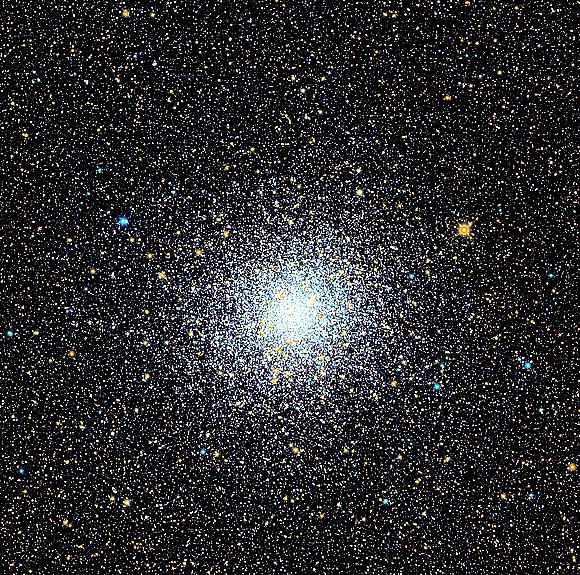
The magnificent globular cluster M22 in Sagittarius. Image credit ESO.
At magnitude 5.1, M22 is one of the brightest globular star clusters in the sky a result as being one of the closest, approximately 10,500 light years distant. M22 is a very average globular, elliptical in shape and around 100 lights years across with half a million solar masses.
The cluster is notable for being one of only four known globular clusters that contain a planetary nebula. (The other three are M15 in Pegasus, Palomar 6 in Ophiuchus and NGC 6441 in it requires large instruments to see with the naked eye. Visually M22 is brighter and larger than M13 in Hercules and is surpassed only by the globular clusters’ omega Centauri and 47 Tucanae in the southern hemisphere. M22 lies only 1 degree from the ecliptic and is often seen close to a planet. A small 80mm (3”) scope will start to resolve the cluster into stars.
Messier 28 (NGC 6626) is a globular cluster located near Lambda Sagittarii (Kaus Borealis). It is similar in size to M22 but much further away at 34,500 light years and appears fainter with an apparent magnitude of 6.8. Messier discovered it in July of 1764 only 3 degrees away from M22. The cluster contains at least 18 RR Lyra type variable stars, pulsating stars about half the Sun’s mass that are used as standard candles to measure galactic distances.
Messier 28 was the first globular star cluster in which a millisecond pulsar (a pulsar with a rotational period between 1 and 10 milliseconds) was discovered in 1986. M28 has the largest known pulsar population of any Messier object.
Messier 54 (NGC 6715) is believed to belong to the Sagittarius Dwarf Elliptical Galaxy and is therefore unique amongst globular clusters in the Messier catalogue as it is not bound gravitationally to our Milky Way. Its distance is estimated to be around 85,000 light years, and at magnitude 7.2 is one of the faintest of the Messier globular clusters. It has an impressive diameter of 300 light years and contains 1.5 million solar masses! The cluster was discovered by Charles Messier in 1778 and lies close to the star Zeta Sagittarii.
Messier 55 (NGC 6809) is another globular cluster but was discovered by the French astronomer Nicolas Louis de Lacaille in 1751 and included by Messier in his catalogue in 1778. Situated 19,000 light years away, the cluster has a generous angular diameter of 19 arc-seconds in the sky but is one of the least concentrated objects of its kind. M55 has a physical diameter of 110 light years and an apparent magnitude of 7.41. Under good seeing conditions the cluster can be resolved into individual stars with a modest 100mm (4”) telescope.
Messier 69 (NGC 6637) was discovered by Nicholas de Lacaille in 1752 and although Messier looked for it in 1764 it wasn’t until 1780, he finally succeeded. The globular cluster lies almost 37,000 light years away and has a physical size of 110 light years and contains 300,000 solar masses. It has an apparent magnitude of 7.7. M69 is located near the Galactic centre and only 2,200 light years away from M70.
Messier 70 (NGC 6681) was missed by Lacaille and was discovered by Charles Messier discovered in 1780. It is located close to the Galactic centre. The globular cluster is about 80 light years across and contains perhaps 200,000 solar masses. The cluster lies approximately 34,800 light years distant. It has an apparent magnitude of 7.8.
Messier 75 (NGC 6864) is the second furthest globular cluster in the Messier catalogue some 78,000 light years from Earth, 40,000 light years beyond the galactic centre. The cluster is about 165 light years in diameter containing 500,000 solar masses and has an apparent magnitude of 8.6. It was discovered by the French astronomer Pierre Méchain in 1780 who described it as a nebula. Smaller telescopes will show a nebulous ball, only instruments above 200mm (8”) will resolve the first cluster stars.
M24 – the small Sagittarius star cloud, which should be distinguished from the large Sagittarius star cloud south of M8. Messier noted this cloud in June 1764 and did not mean the small stellar cluster which in later years was given the NGC designation 6603. The cloud does not hold any other catalogue names. M24 is really just a fortuitous view we have from Earth of a huge number of stars at a range of distances through a window in the interstellar dust clouds found in that direction of the galaxy.
The Small Sagittarius Cloud. (Click for full image)
Image credit -Christopher Freeburn https://www.astrobin.com/users/CrestwoodSky/
This ‘keyhole window seat view’ allows us to not only look through our local spiral arm as well as the Sagittarius – Carina arm, but also deep into the inner Norma spiral arm and more than halfway toward the galactic centre. It is within M24 we find the open cluster NGC 6603 12,000 light years distant in the Norma arm. M24 sits centre stage amid nine Messier objects.
Located at the northern edge of M24 two small, dark clouds (B92 & B93) mark the entrance to our tunnel window, lying just a few hundred light years away belonging to our own spiral arm.
Other notable deep sky objects in Sagittarius include Baade's Window one of the few lines-of-sight to the Galactic centre not obscured by dust.
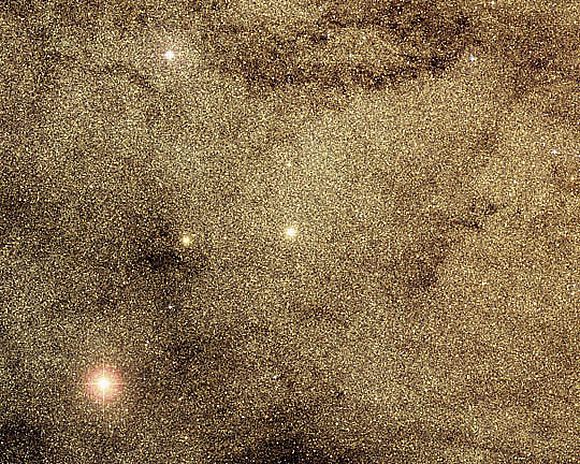
Baade's Window - a view towards the galactic centre. Image credit - AAO (Click for full image)
Two globular clusters, NGC 6522 and NGC 6528 are visible through Baade's Window. 20,000 and 24,000 light-years respectively from Earth. Both are magnitude 9 objects with NGC 6522 being slightly brighter.
NGC 6520 – is an open cluster located 5,200 light years away seen against the dense starry background of the Large Sagittarius star cloud. It is adjacent to the dark nebula Barnard 86 dubbed the ink spot. The cluster is probably under 100 million years old and contains over 300 stars. It has an apparent visual magnitude of 7.6.
The open cluster NGC 6520 and Barnard 86 seen against the backdrop of the LSSC.
(Click for full image) Image - International Gemini Observatory.
Chart images - credit - Stellarium & Starry Night Pro plus 8.
- Log in to post comments



